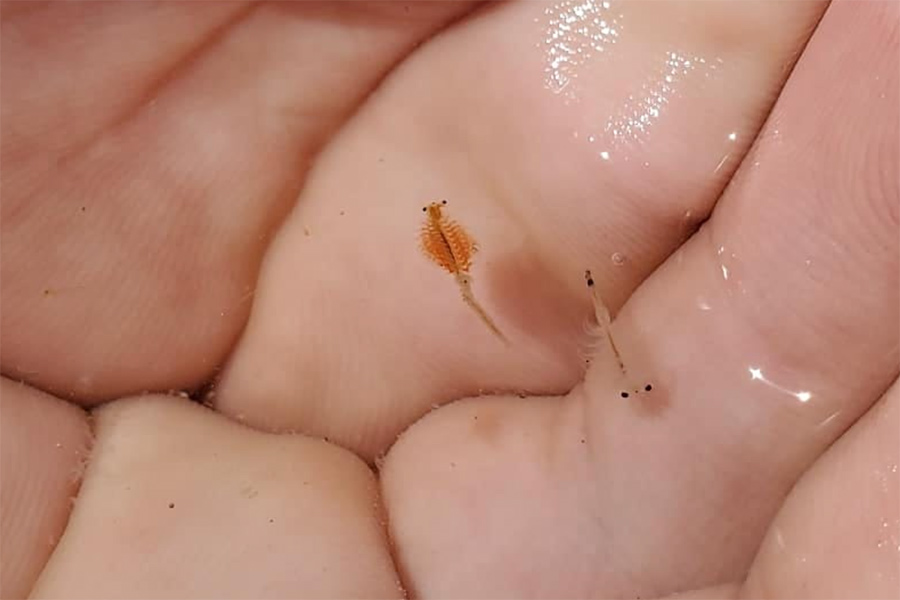Brine shrimp officially named Utah's state crustacean
Salt Lake City — The brine shrimp has officially joined the ranks of Utah state symbols after Gov. Spencer Cox signed H.B. 137 on Friday, March 17, formally designating the brine shrimp as the state crustacean.
Brine shrimp are small crustaceans that inhabit salty waters around the world, both inland and on the coast. Ranging from ⅓ of an inch to a ½ inch, these shrimp are much smaller than the ones you eat. In Utah, they are only found in the Great Salt Lake.
The brine shrimp produce eggs (called cysts), which are harvested by private companies and used as food for fish and commercially grown shrimp. The harvest of the brine shrimp cysts contributes to a multi-million dollar industry in Utah, and the Utah Division of Wildlife Resources manages the brine shrimp population and regulates harvest to help balance a unique ecosystem. The commercial brine shrimp fishery at the Great Salt Lake supplies over 40% of the worldwide demand for brine shrimp, which has an economic impact globally, as well.
The Great Salt Lake and its associated wetlands provide an invaluable food source to around 10 million migratory birds, including about 330 different species. A variety of these birds feed on the brine shrimp in the Great Salt Lake, either exclusively or opportunistically, to fuel their long migrations. Eared grebes, in particular, molt while they are migrating through Utah in the fall, which means they are flightless and completely dependent on the brine shrimp in the Great Salt Lake for food. They will eat between 25,000 to 30,000 brine shrimp a day.
The brine shrimp play another important role in the Great Salt Lake ecosystem by eating the algae in the lake. The adult shrimp typically freeze and die each December, while the cysts will survive and hatch in March.
"The importance of the brine shrimp in the Great Salt Lake ecosystem can't be overstated," DWR Great Salt Lake Ecosystem Program Manager John Luft said. "We are thrilled about the designation of the brine shrimp as the state crustacean and the attention they are getting for their role at the Great Salt Lake."
Low lake levels can result in higher salinity (salt concentrations) of the water, which would subsequently decrease the algae that are consumed by the brine shrimp and brine flies. Decreases in algae will ultimately impact the brine shrimp and brine flies, which would then have impacts on the birds that rely on them for food. Additionally, high salinities can directly impact brine shrimp by increasing the osmoregulation demands, which reduces their reproductive capacity and limits their growth.
The brine shrimp isn't the only wildlife to recently be recognized as a new state symbol. The golden eagle was named the state bird of prey last year, and in 2019, the Gila monster was designated the official state reptile.

















